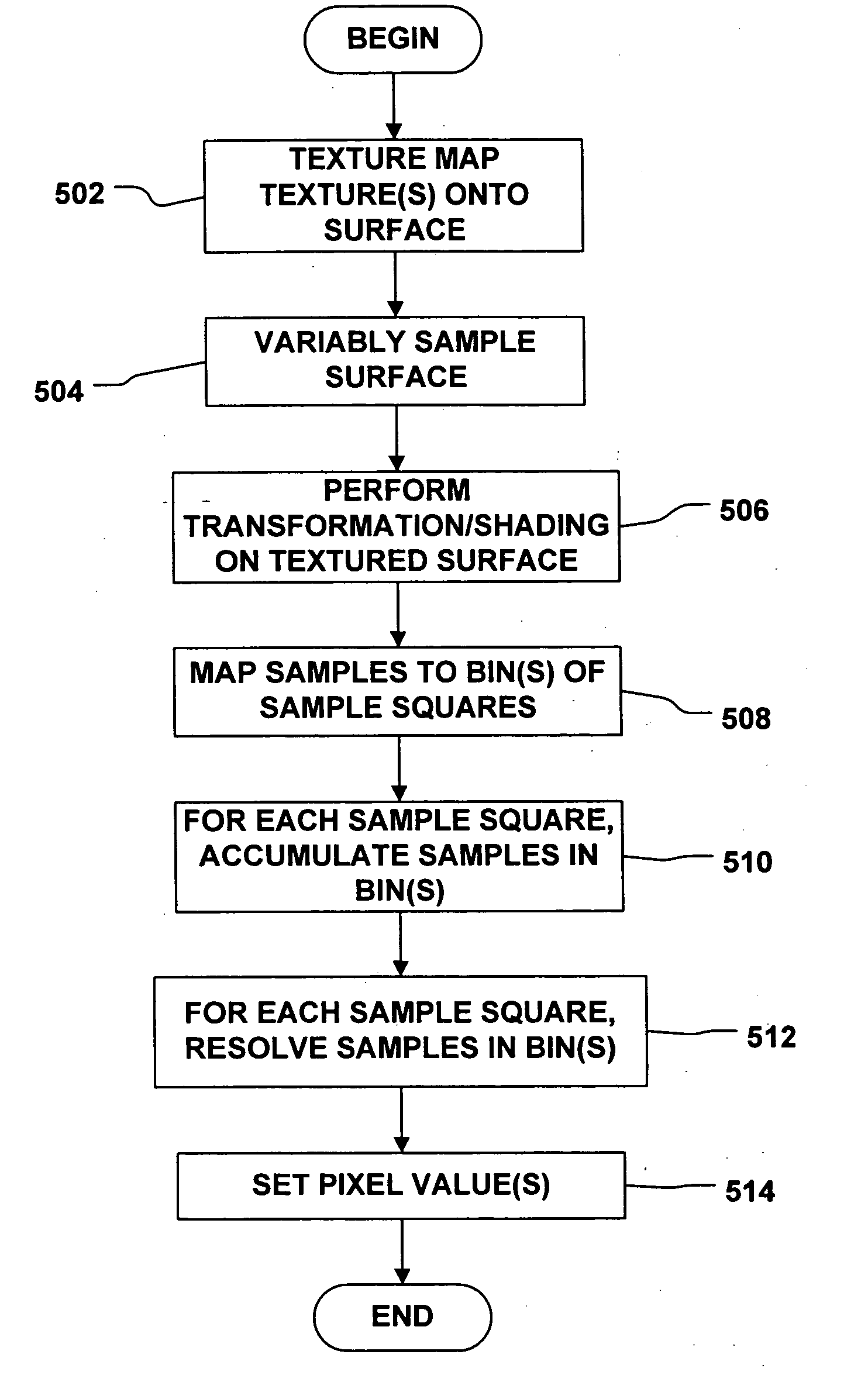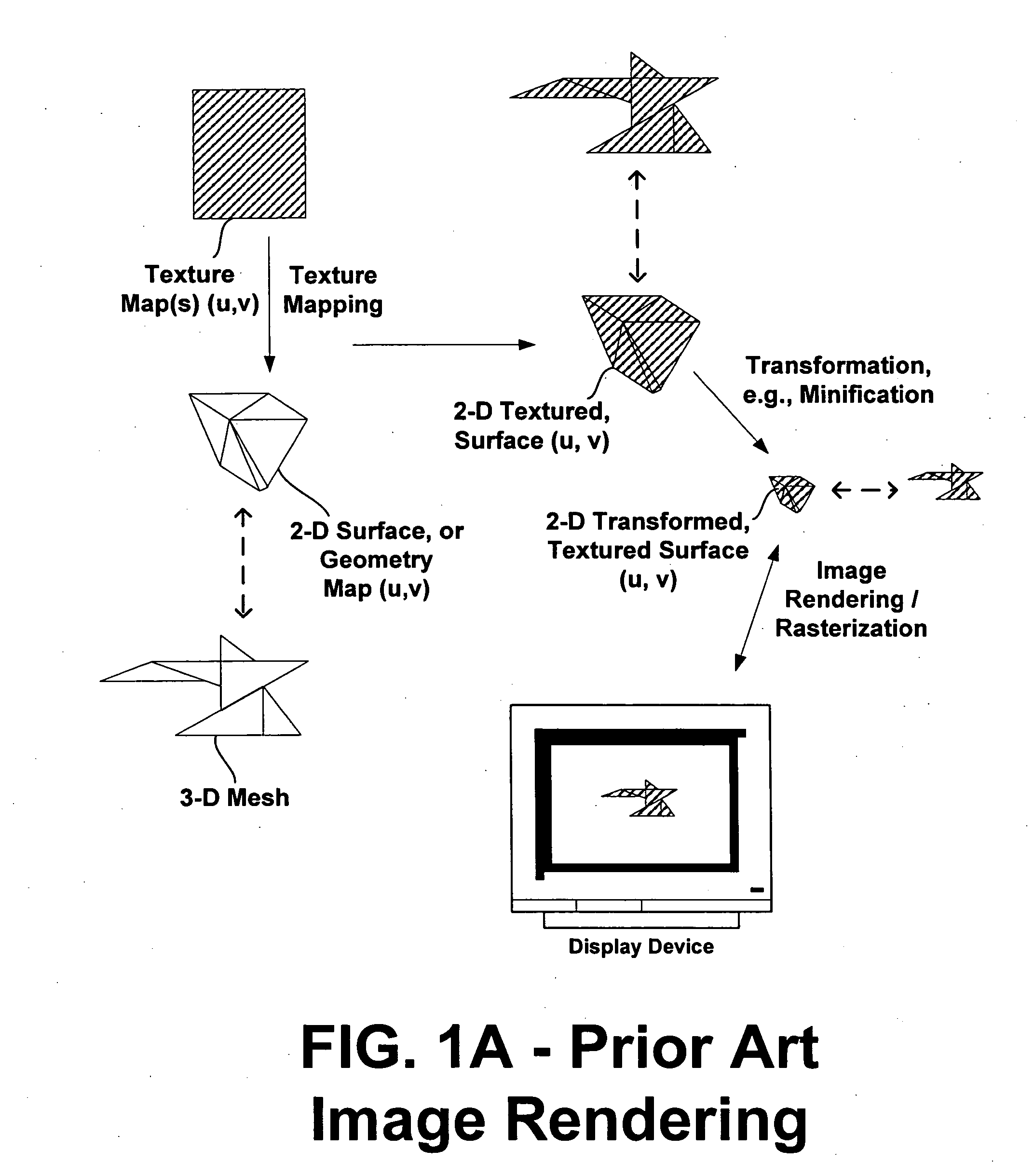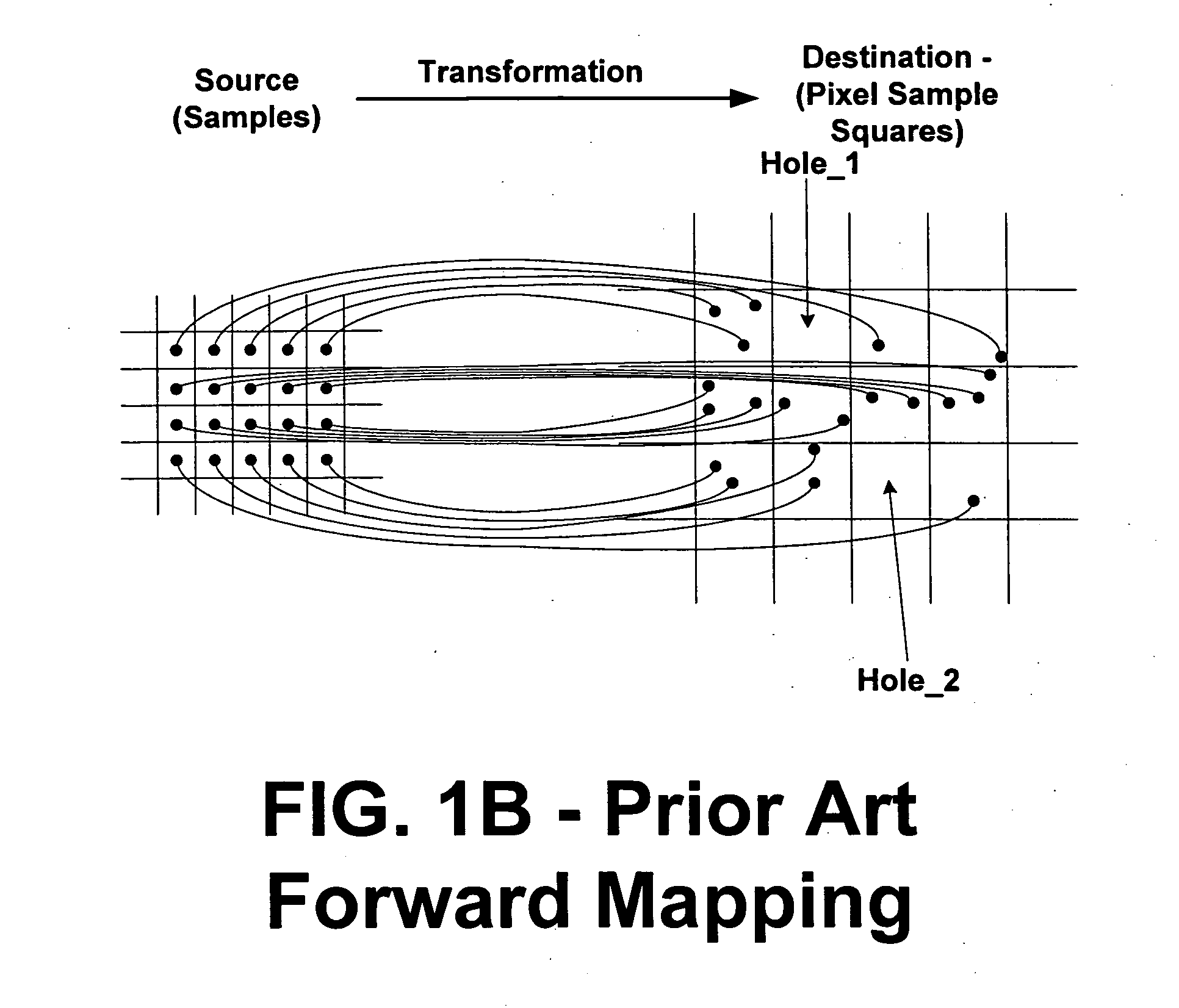Systems and methods for providing image rendering using variable rate source sampling
a source sampling and variable rate technology, applied in the field of system and method for providing image rendering, can solve the problems of ineffective antialiasing of images, inability high cost of the present architecture to achieve true anisotropic filtering, etc., to achieve high frequency content, eliminate gaps or holes, and improve the effect of quality
- Summary
- Abstract
- Description
- Claims
- Application Information
AI Technical Summary
Benefits of technology
Problems solved by technology
Method used
Image
Examples
Embodiment Construction
Overview
The invention thus provides methods and systems for providing image rendering using variable source rate sampling, and for accumulating and resolving all samples forward mapped to a bin. In accordance with the invention, the surface, e.g., the textured geometry, to be rendered is sampled, or oversampled, at a variable rate that reflects variations in frequency among different regions, taking into account any transformation that will be applied to the surface prior to rendering and the view parameters of the rendering device, thus ensuring that each bin of rendering process includes at least a predetermined number of sample, e.g., at least one sample per bin. High frequency regions of the source, i.e., those regions having a finer level of detail, are sampled at a higher rate than low frequency regions of the source. In one embodiment, a tiling approach to division of the source(s) is proposed. A geometry map can be used to correlate texture samples with points on the surf...
PUM
 Login to View More
Login to View More Abstract
Description
Claims
Application Information
 Login to View More
Login to View More - R&D
- Intellectual Property
- Life Sciences
- Materials
- Tech Scout
- Unparalleled Data Quality
- Higher Quality Content
- 60% Fewer Hallucinations
Browse by: Latest US Patents, China's latest patents, Technical Efficacy Thesaurus, Application Domain, Technology Topic, Popular Technical Reports.
© 2025 PatSnap. All rights reserved.Legal|Privacy policy|Modern Slavery Act Transparency Statement|Sitemap|About US| Contact US: help@patsnap.com



